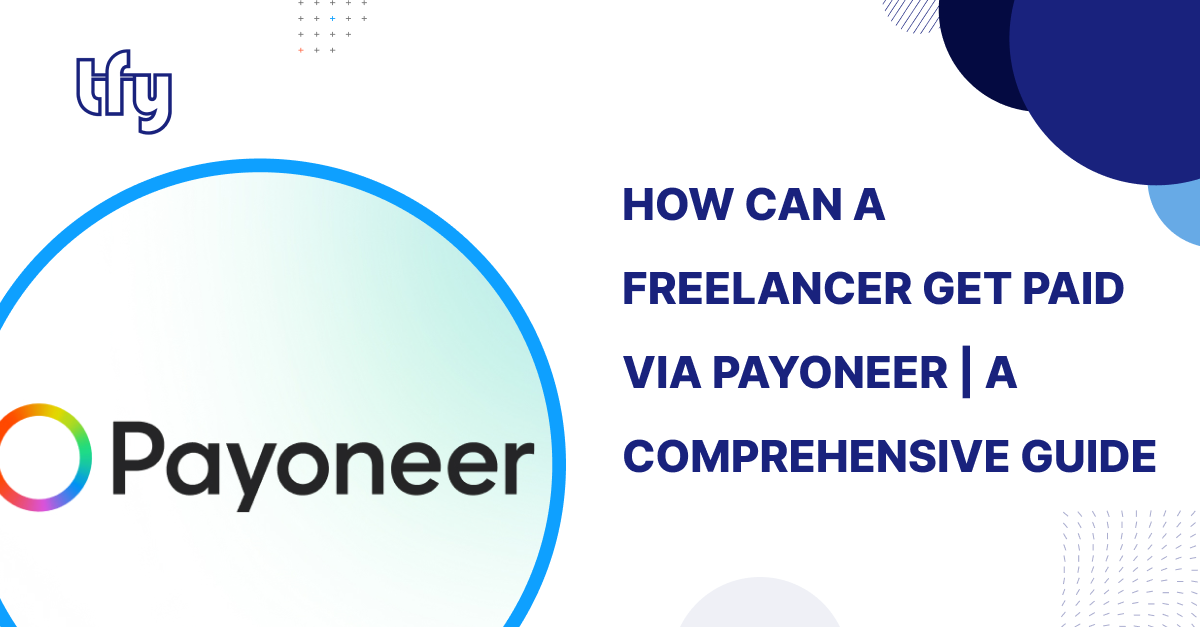
Prompt and secure receipt of international payments is a crucial concern in the quickly growing gig economy. Receiving money from overseas clients in a timely, economical, and secure manner is a problem that many freelancers face. Their cash flow and operational efficiency can be severely impacted by a number of factors, including late payments, expensive transaction fees, problems converting currencies, and the difficulty of juggling multiple banking systems. Payoneer is a specialized financial service provider that streamlines international payment receipts and receiving cross-border payments, hence addressing these pain points. Freelancers onboarded to Transformify (TFY) vendor management system (VMS) can select Payoneer as their preferred payment method to streamline their international payment receipts.
One of the key benefits of using Payoneer is the Payoneer card, which allows freelancers to easily withdraw money, pay expenses, and access funds with minimal hassle.
This article will teach us how to accept payments using Payoneer, which provides simple, affordable options made especially for independent contractors that work in a variety of industries.
Understanding Freelancer Payment Challenges
Pain Point 1: Delayed Payments
Many freelancers face significant delays in payments, which can disrupt their cash flow—a crucial aspect of maintaining a stable freelance business. Traditional bank transfers can take several days to process.
Pain Point 2: High Fees and Hidden Costs
Freelancers' profits may be negatively impacted by the high costs associated with international money transfers, which frequently include currency conversion charges. It's also possible that banks and certain payment platforms have unstated fees.
Pain Point 3: Currency and Exchange Rate Issues
Working with a variety of foreign clients can provide challenges for freelancers handling numerous currencies and variable currency rates.
Pain Point 4: Security Concerns
Freelancers need assurance that their funds are secure, especially when dealing with big payment volumes or sensitive transaction information. Using two-factor authentication can help secure their Payoneer account by requiring a one-time password (OTP) for withdrawals.
How to Use Payoneer for Freelance Payments: A Step-by-Step Guide
Step 1: Sign Up and Verify Your Account
- Visit the Payoneer website.
- Select "Sign Up."
- You’ll need to enter personal information, including your name, email address, and date of birth.
- Choose the "Freelancer" account type.
- Then you will need to enter the total amount of monthly international payments you receive.
- Click Register.
- You will need to authenticate yourself after completing your information. A clean copy of your ID from the government (passport, driver's license, or national ID) should be uploaded. Additionally, certain nations would need address proof, like a utility bill or bank account.
- Once submitted, Payoneer will review your application. This process can take several days. You’ll receive an email notification once your account is approved.
Step 2: Link Your Bank and Choose Currencies
- Go to your Payoneer account's "Bank Accounts" section by selecting it from the "Settings" menu. After selecting "Add Bank Account," fill out the required fields with the account number, bank name, and SWIFT code of your local bank.
- You have the option to specify the currencies you would want to be paid in. This reduces the need for currency conversion and is especially helpful if you work with clients from other countries because it lets you receive and withdraw money in common currencies like USD, EUR, GBP, etc.
Step 3: Communicate Payment Methods to Clients
- Choose "Account Activity" and then "Payment Request Sent" from your Payoneer dashboard. This enables you to use Payoneer to send clients straight invoices. Send the payment request to your client's email after entering the requested amount, currency, and deadline.
- Alternatively, provide your clients with the email associated with your Payoneer account for direct payments, or give them your Payoneer account details for bank transfers.
Step 4: Utilize Payoneer’s Global Payment Service
- Set Up Global Payment Service: This feature provides you with receiving accounts in multiple currencies, mimicking having local bank accounts in countries like the USA, UK, Eurozone, etc.
- Receive Payments: Give the relevant account details (like a local bank account number and routing number for USD) to your clients. They can then make a local bank transfer, which you receive directly into your Payoneer account.
Step 5: Regularly Withdraw Funds
You can set up automatic withdrawals to your local bank account in your Payoneer account settings. Depending on your cash flow requirements, choose whether to make these withdrawals daily, weekly, or monthly.
Additionally, you can use the Payoneer card to access your funds and pay expenses directly.
Step 6: Leverage Advanced Features for Business Growth
- To get a summary of your transactions, make use of Payoneer's extensive reporting features. This can assist you with managing your finances, prepare for tax season, and analyze your business growth.
- Link your Payoneer account to well-known freelance websites such as Transformify (TFY), Fiverr, Upwork, and others. This eliminates the need for manual intervention and enables smooth money transfers from the marketplace to your Payoneer account.
Benefits of Using Payoneer for Freelancers
Expand Your Reach
Payoneer removes geographical constraints and opens up new business opportunities by connecting independent contractors with clients and markets around the globe.
Simplify International Payments
Payoneer handles currency conversions and ensures quick, safe transactions, which simplifies the process of accepting overseas payments. As a result, freelancers can concentrate more on their work and the administrative load is lessened.
Get Paid in Multiple Currencies
Freelancers can invoice clients and receive payments in various currencies, maintaining balances in each. This flexibility helps manage exchange rates and withdrawal fees effectively, optimizing earnings.
Ease of Doing Business
Payoneer makes financial transactions easier by integrating into well-known freelancing markets. This allows freelancers to manage their funds more effectively and expand their enterprises internationally.
Maximize Income Streams
Payoneer reduces transaction costs and streamlines money administration by enabling independent contractors to accept payments from several sources into a single account.
Keep More of Your Earnings
Competitive fees and favourable exchange rates ensure that freelancers retain a greater portion of their earnings. Fast access to funds improves cash flow and financial stability, allowing freelancers to reinvest in their business quickly. The Payoneer card offers competitive fees and easy access to funds, making it a convenient option for managing expenses and withdrawals.
To sum up, as a freelancer, your objective is to expand your business and pursue your passion without becoming sidetracked by the difficulties associated with making foreign payments. Payoneer recognises this and offers a solution that aids in both streamlining these procedures and advancing your international goals. You may connect with clients worldwide and more efficiently safeguard your earnings by using Payoneer, which gives you access to a world of opportunity. Accept Payoneer payments via Transformify (TFY) now, and you’ll be well on your way to a more lucrative and stress-free freelance job!



